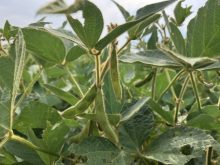MarketsFarm — Hot, dry growing conditions in key spring wheat-growing regions of the northern U.S. and Canadian Prairies have seen Minneapolis (MGEX) spring wheat futures widen their spread over Chicago and Kansas City winter wheat contracts over the past few weeks — with additional strength likely given the current weather forecasts.
Nearby spring wheat futures, trading at around $8 per bushel, were posting a premium of nearly $2 per bushel over K.C. hard red winter wheat on Wednesday (all figures US$).
That marks the largest premium since 2017 and compares with early 2021 when spring wheat was trading at par or even at a slight discount to K.C. wheat.
Read Also

Klassen: Feeder market sees wide price range
For the week ending December 13, Western Canadian feeder cattle markets traded $10 higher to $10 lower compared to seven…
Hot and dry weather was the main driver behind the strength in spring wheat, according to Bryan Strommen of Progressive Ag at Fargo, N.D.
With no significant precipitation in the forecast, “for the most part, I don’t even know if rain would help” the wheat crop, he said.
“They kept putting rain in the extended forecast, but it just didn’t happen, with spotty showers here and there and no big widespread soaking rain.”
While the advancing U.S. winter wheat harvest and relatively ample world wheat supplies should keep winter wheat futures under pressure and possibly weigh on spring wheat, Strommen expected spring wheat would maintain its premium, given the likelihood of tighter supplies of higher-protein milling wheat this year.
From a chart standpoint, he saw an upper target around $8.50-$8.60, with a move above that level necessary to encourage another leg higher.
For soybeans and corn at the Chicago Board of Trade (CBOT), all eyes are also on the weather.
“The forecast for the western Corn Belt is dry and hot, but there’s rain in the forecast for the eastern Corn Belt, so it’s a tug-of-war between the two and we’ll see what materializes with the weather,” Strommen said.
Acreage and stocks numbers from the U.S. Department of Agriculture on June 30 could also lead to some price swings if there are any surprises.
— Phil Franz-Warkentin reports for MarketsFarm from Winnipeg.















